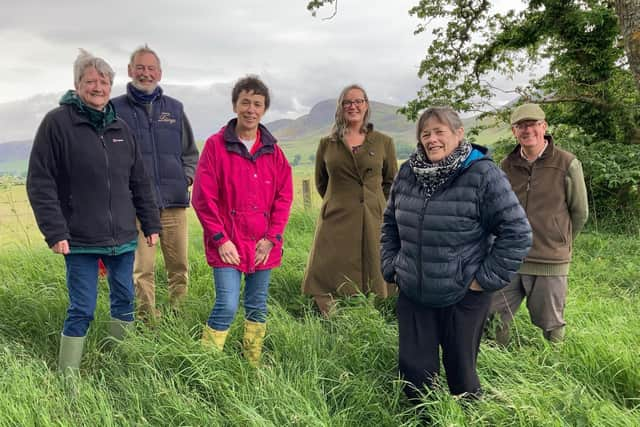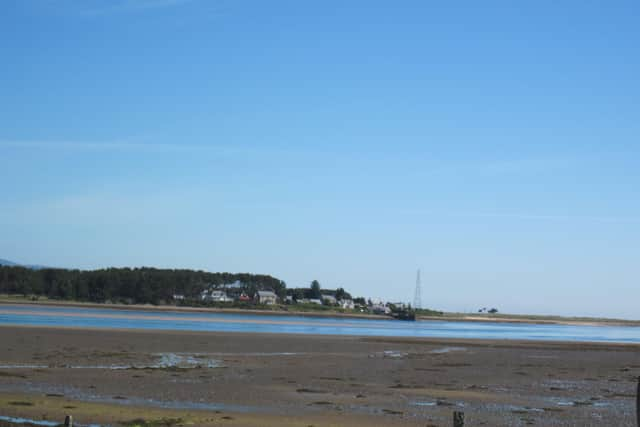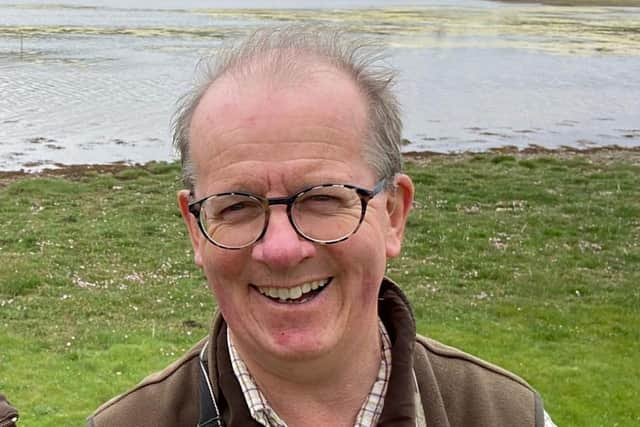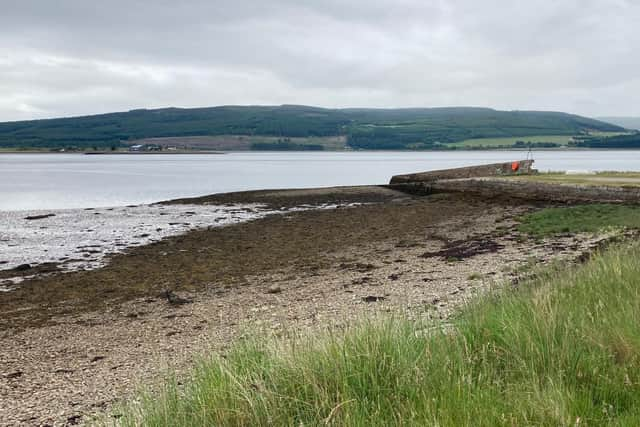The Battle of Littleferry: First look at the bloody event that history had forgotten that led to Battle of Culloden
Now, almost 300 years on, a project team in Golspie, Sutherland – a popular stop on the North Coast 500 – is developing a memorial site and battlefield trail so that visitors and locals can understand the enormity of what happened on the serene land centuries ago.
Plans were originally to unveil the memorial stone at the battlefield on April 15 – the 275th anniversary of the battle – but due to Covid-19 the ceremony has been delayed exactly one year to 2022.
Advertisement
Hide AdAdvertisement
Hide AdThe man behind the project, Littleferry resident and former Commandant of the Royal Military Academy Sandhurst, Major General Patrick Marriott, is also writing the first historical documentation of the battle, using a large range of primary and secondary sources dating all the way back to the 1740s.
Maj Gen Marriott became curious about the history during last year’s lockdown when he was regularly cycling past the area where the battle was thought to have taken place. After considerable research – and what he describes as a “soldier's eye” – he now envisions how events may more likely have played out.
Speaking to The Scotsman, Maj Gen Marriott has shared some details of the battle and what it meant for a depleted regiment of Prince Charles’ Jacobite army – a regiment that failed to reach Culloden in time to fight alongside Jacobite troops against government forces on April 16, 1746.
Prince Charles had retreated to Inverness from England in 1746 after realising the government army was moving north.
At this point he lacked men, money and weapons, so he sent a number of regiments out into the Highlands in a bid to resolve the shortages. One of those regiments, headed by George Mackenzie, the 3rd Earl of Cromarty, was despatched to Sutherland.


Maj Gen Marriott said: “The northern Highlands was largely government territory, with clans such as Mackay and Sutherland being fiercely loyal, so Cromarty was really going into enemy-held territory.”
When he arrived in Sutherland there were six companies of government forces, all roughly 80 men strong, with no overall leadership. Four were local militia and two were independent companies who didn't fully take part in the battle.
Cromarty moved north across the Dornoch Firth, capturing Dornoch and continuing via Littleferry to take Dunrobin Castle. The 17th Earl of Sutherland fled the castle, leaving his wife behind.


Advertisement
Hide AdAdvertisement
Hide AdThe following two months were miserable and wet. The government forces were hiding in the hills going hungry, but thanks to a number of spies they were kept well informed of Cromarty’s movements.
Maj Gen Marriott said: “Scroll forward to April. Prince Charles recalls all his men because he realises that with government forces pressing north, there is going to be a fight, one that will eventually take place at Culloden.
"Cromarty decided to move on the morning of April 15, but that information leaked to the militia men up in the hills.
“By this point the militia companies had been joined by a number of officers and men from the independent companies, which is hugely important because they brought leadership and tactical skills.


“One of the militia groups didn’t get involved, so what you’ve got are three companies who just think ‘we’re going to bloody well do it’, and they decide to attack even though they are outnumbered.”
The plan was simple – one company would attack Cromarty from the rear near Dunrobin Castle, while the other two companies would attack from the flank along Ferry Road.
However, when the first group made it north of the castle they discovered that most of the regiment had already left. They quickly received information that Cromarty had stayed behind with his son and most of his officers.
They then rushed to Golspie to ambush them at the north end of the village, at the junction where St Andrews Church still stands.
Advertisement
Hide AdAdvertisement
Hide AdMaj Gen Marriott said: “We have first-hand accounts of them firing from the walls of the churchyard at Cromarty and his officers, at least one was killed. Cromarty retreated with his group back to the castle where they hoisted a white flag, not of surrender, but to signal to the rest of his regiment, spread out between Golspie and Littleferry, to return to help them.”
Unfortunately for Cromarty, his men were unable to return to rescue him as more fights were breaking out throughout the village.


The other militia companies saw the chaos from the hills and as their chance to attack.
All three of the militia companies eventually joined together, rounding up what was left of Cromarty’s men before encircling them at Littleferry, where they put up one last stand.
First-hand accounts detail some men drowning while trying to escape in boats, while others who were desperately clawing at the sides to climb aboard had their fingers chopped off with swords.
“There was quite a fight then, one account tells of 27 men being shot and killed, and 178 men surrendering.” Maj Gen Marriott said.
“Around 50 men are unaccounted for, but the locals probably got most of them.”
The militia then returned to Dunrobin Castle and captured Cromarty himself.
Advertisement
Hide AdAdvertisement
Hide AdMaj Gen Marriott said that it was unlikely any of Cromarty’s regiment would have made it to Culloden after the Battle of Littleferry, which the Jacobites went on to lose anyway. He said the potential impact on Culloden of the late arrival of a Jacobite regiment was a good historical ‘what if’ discussion.
The recent extensive research has created a comprehensive picture of exactly what happened at Littleferry on April 15, 1746, and what has been revealed is an “extraordinary battlefield which, until now, time has basically forgotten”.
To find out more about the project and the history by Maj Gen Marriott, contact [email protected].
You can also access the Battle of Littleferry Facebook page here.
A message from the Editor:Thank you for reading this article. We're more reliant on your support than ever as the shift in consumer habits brought about by coronavirus impacts our advertisers.
If you haven't already, please consider supporting our trusted, fact-checked journalism by taking out a digital subscription.
Comments
Want to join the conversation? Please or to comment on this article.
